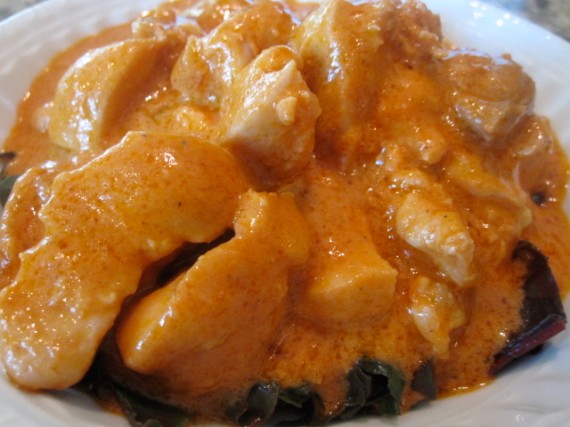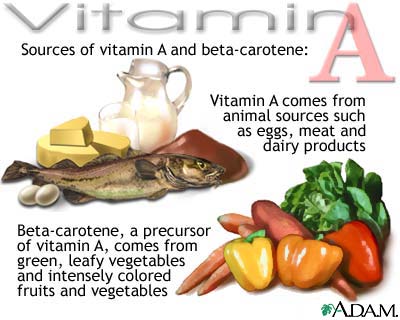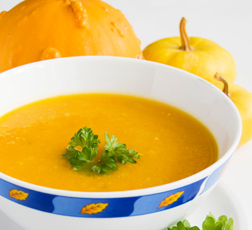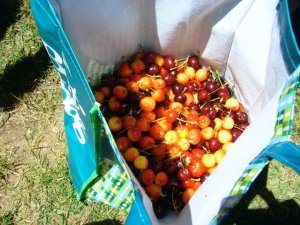This is a re-post of a very thorough piece of writing my Steven Low of eatmoveimprove.com. It’s long, but has terrific info on the causes of cardiovascular disease, pro- and anti-inflammatory foods, and of course what & how to eat to improve your health (hint: it should sound very familiar!) Enjoy!
The facts on cardiovascular disease
So I thought I’d take a quick break from writing the e-book/book to dispel some popular myths on this topic. For all of you wondering what I am writing the book about it will be on programming for beginners and intermediates for bodyweight strength training. I have a lot more information in queue besides what I listed in “The Fundamentals of Bodyweight Strength Training” so I hope you guys will look forward to that. Consider it as a preview to what the book will be about.
Table of Contents
I. What is cardiovascular disease?
II. Common myths of cardiovascular disease
III. How does atherosclerosis develop?
IV. Relating it all back to diet
1. Carbohydrates
2. Fats
3. Protein
4. Are you overweight?
V. The Conclusion
VI. Countering inflammation
What is cardiovascular disease? / To the top
Cardiovascular disease, otherwise known as heart disease or CVD, is the leading cause of death in America today. An estimated 81,000,000+ people have some form of CVD, and there are over 800,000+ deaths per year – more than cancer, accidents, and HIV combined.
Most of the deleterious changes in the heart are due to a specific subset of CVD which is coronary heart disease or coronary artery disease. The cause of this specifically is atherosclerosis.
Atherosclerosis is the build up of fatty plaque lining the inside of the arteries. If left unchecked and allowed to proliferate, atherosclerosis will lead to high blood pressure, myocardial infarction (heart attack), angina pectoris, congestive heart failure, potentially stroke, and other life threatening conditions as well.
Common myths of cardiovascular disease / To the top
One common myth on the development of atherosclerosis is that fat is bad. All fat is bad. Or saturated fat is bad.
This is very misleading. Unlike the food pyramid and many of the organizations out there would recommend polyunsaturated and monounsaturated fats are not universally good, and saturated fats are not universally bad. Fatty meat can be both bad and good – the correct answer is that it depends.
Another myth is that carbohydrates are good. If anything carbohydrates, especially refined carbohydrates are universally bad. Starches, which are complex carbohydrates, tend to be more on the neutral side of things but certainly not on the good side.
Fruits tend to be a bit on the more neutral side of things. While they do contain a large amount of simple sugars/carbohydrates, many contain a large amount of anti-oxidants which help buffer against the deleterious effects of simple sugars.
Another myth is cholesterol is bad. Cholesterol, especially dietary cholesterol, is not bad at all.
Lifestyle choices are the major reason that atherosclerosis develops. Eating right, exercising, and good sleep are all big factors in prevent cardiovascular disease.
We will look at all of this in more detail; however, first we will show you how atherosclerosis develops.
How does atherosclerosis develop? / To the top
Let’s examine how atherosclerosis develops. I found this excellent picture of how plaque buildup begins and develops, and I will refer back to it as I need to. Each phase will be depicted by #1-6.

Photo from http://scienceblogs.com/
1. Tissue damage and inflammation.
Inflammation is a normal response in the body tries to remove pathogens while trying to heal the body. Unfortunately, in many cases inflammation can go haywire such as when you sprain your ankle and it swells up to the size of a softball. The same is true of the initial phase of atherosclerosis.
We can tell the arteries are being damaged because macrophages start to gather around the artery walls. In the initial phase of inflammation when tissues are damaged, the damaged cells release cytokines which stimulate the immune system to start sending white blood cells (macrophages are one type) to the area because it thinks it is under attack.
Here is one such study confirming inflammations role.
2. Continued macrophage accumulation, and fatty streak.
Now, once the inflammation gets started if it is continually exacerbated through diet the body will keep sending macrophages to the area. This will lead to an accumulation of macrophages at the area.
The fatty streak is where the blood lipids come into play.
First, LDL and HDL are not cholesterol (LDL is commonly referred to as “bad cholesterol”). LDL and HDL are respectively low density and high density lipoproteins. These lipoproteins transport cholesterol and triglycerides to and from the cells of the body respectively.
Now, there are many forms of LDL. In the interest of brevity I’ll just tell you flat out that bigger is better. The bigger the LDL particle size is, the healthier you are. This is why if on your blood lipid panels you have a high LDL count it may mean nothing; you may be healthy if they particle sizes are all big.

Image from http://www.longevitytesting.com – because bigger is better (insert joke here)
Specifically, one of the abnormal forms of LDL is called oxidized LDL (oxLDL). It is “small and sticky” because oxidation of molecules makes them inflammatory (oxidation is an inflammatory process). More on oxLDL (one, two, three, four, five, six, seven, eight, etc. — google/pubmed oxidized LDL or oxLDL).
This is a big problem as we know because the arteries are already inflammed with macrophages gathering at the site. When the oxLDL-cholesterol and oxLDL-triglyceride molecules pass by the sites of inflammation in the arteries they very easily get stuck there because (1) they are small and get stuck in crevaces easily, and (2) because they are already inflammatory. Inflammation begets inflammation.
In addition, oxidation of the non-oxidized LDL particles and the fatty substances also generate reactive oxygen species (ROS). In other words, ROS = free radicals that add to the damage of the endothelial/artery cells and create inflammation.
This leads to an increased amount of fatty buildup via cholesterol and triglycerides bound to the LDL particles. These two processes occur simultaneously and build off each other.
3 & 4. Continued inflammation leads to continual macrophage and lipid accumulation.
This is self explanatory if dietary factors are unchanged.
The lipids accumulate and start to group together via hydrophobic/hydrophilic bonding and form cores of fatty streaks within the inflammed areas.
Here is a video summary of the first few steps.
5. Fibrosis and calcification.
Inflammation is the cause of these as well.
What happens when you get a deep gash or wound on the skin? As the wound heals it scabs over, and then falls off. However, underneath is usually composed of scar tissue. Fibrosis or fibrotic changes within the tissue being continually damaged (the arteries itself) will occur as the inflammation is allowed to continue.
Calcification seems weird on the surface, but is quite logical. One of the major risk factors in excessive inflammation is calcification of the site. When inflammation and excessive edema/swelling occurs within an injury such as a sprained ankle or muscle tear, the inflammation signals for the body to repair. Since there is calcium ions contained within the blood and lots of oxidized material, the calcium may start to precipitate out of the blood and form calcified solids.
So in the end, chronic inflammation leads to fiborsis and calcification of the fatty solids and macrophage tissue. Here’s a nice picture of what happens in this phase.

Photo from http://content.onlinejacc.org/
6. Surface defects, hematoma, thrombosis.
This is where the crap is really hitting the fan.
As the atherosclerotic lesions start to grow bigger, they start forming oddly shaped structures or the surface becomes more inconsistent.
This is problematic because whenever you start moving around a lot (or even a little in the case of very bad development) the arteries themselves grow and shrink to accommodate blood volume and exercise stress.
Since the plaque itself is already hardened and fibrous, it is unlike arteries which are made to constrict and widen easily. Thus, the probability goes up that the arteries themselves will tear (an aneurym leading to hematomas – the collection of blood outside of blood vessels) or thrombosis (blood clots forming and blocking the flow of blood in the arteries – occurs with, you guessed it, inflammation).
This is where the really bad stuff starts occurring like heart attacks, stroke, etc. You are in a life threatening situation if this occurs.
In conclusion, chronic inflammation of the arterial walls is the primary cause of athersclerotic development.
Continued inflammation from dietary sources consitently aggravates the arterial tissue much in the way continued scratching a rash will irritate the skin. If done for long enough periods of time, the lesions on the arterial walls become “scab-like” and filled with pus (macrophages) which is trying to remove the “pathogens” which are the invaded oxLDL-triglyeride and oxLDL-cholesterol fatty substances.
One analogy I’ve seen is that poor diet is like taking a cheese grater to your arteries and rubbing. Every day at every meal. Sickening but true. But that’s what a poor diet does.
Relating it all back to diet / To the top
So now we know that the major cause of everything related to atherosclerosis is related to inflammtory processes gone haywire inside the body.
The problem is how exactly do we combat this if we do not know what foods are inflammatory or not?
This is where a lot of the current dietary recommendation of the government has gone wrong. The low fat diet does not work. The food pyramid does not work.
Let us take a look at foods.
Carbohydrates / To the top
Carbohydrates are oxidized in our bodies for fuel (via glycolysis and cellular respiration). This is necessary for life, so obviously we cannot go without them.
Even if we eat a zero carbohydrate diet our livers have a process called gluconeogenesis which will manufacture glucose for our cells to use. Thus, carbohydrates are not universally bad; it is the magnitude of how much we consume which is bad for us.

Image from http://www.biochem.arizona.edu/
As we examined before simple and refined carbohydrates are very bad in most cases. Simple sugars are absorbed into our bodies via cotransport (symport) from the intestinal lumen into the blood stream. This requires no energy and is very quick.
A quick spiking in carbohydrates into the bloodstream leads insulin spiking to drive the sugars into tissues such as muscles for energy and fat cells for storage. As we explained before, oxidation of these sugars are extremely inflammatory.
This inflammation is strong enough to increase the levels of C-reactive protein, TNF-alpha (tumor necrosis factor-alpha), and other markers of inflammation strongly. Unfortunately, I am not going to go in depth to discuss these factors, but you can research them in pubmed or google at your leisure.
Clearly, this is one of the ways that the arteries themselves start to become inflammed.
Starches, however, found in most vegetables are more slowly absorbed. This causes less of an insulin spike, and less inflammatory reactions in the body.
I intentionally left wheat and other grains out of the starches. While they are more slow absorbing, a lot of wheat products are highly inflammatory in the gut. This is not just true of celiac patients – most people have some sort of sensitivity to gluten even if you are not aware of it. I would suggest everyone at least try gluten free eating to see if your health improves especially if you have intestinal issues or other inflammatory conditions such as asthma.
Fruits, as mentioned before, are mostly composed of simple sugars, but they do have a lot of anti-oxidants to counter the effects of the sugar. They are at best, neutral, and at worst (if consumed extensively) possibly detrimental by stimulating inflammation. Kurt Harris, one of the strong proponents of very low carbohydrate Paleo eating, has said that fruits have evolved to contain anti-oxidants BECAUSE of the inflammatory nature of carbohydrates in the body. Something interesting to think about.
In general, if you are going to eat carbohydrates stay away from anything processed. And stick with fruits and vegetables. Mostly vegetables.
Regarding mass consumptions of fruits I would avoid this because they are all carbs. If anything it would not be a good idea to eat anymore than 1-2 cups of fruit per day because of the high carbohydrate content. The berries — strawberries, blueberries, raspberries, etc. — tend to be a lot better than most fruits nutrient-wise and are a little less on the sugar content. I would eat most of my fruits, if you are going to eat them, from these.
Again, what is healthy? Real foods. Fruits and vegetables.
Fats / To the top
Fats are an interesting topic because they are demonized in general by the government and many other of the top level medical organizations. This is one of the biggest delusions and blunders of modern nutrition.
First, let’s hash out why some fats are good and some fats are bad.
Omega 6 fatty acids are highly inflammatory polyunsaturated fatty acids. Conversely, Omega 3 fatty acidsare highly anti-inflammatory.
Obviously, given what we know about inflammation above we know that Omega-6 fatty acids are “bad” and Omega-3 fatty acids are “good.” We should not get too far ahead of ourselves though because our bodies need an adequate balance of O 6:3 ratios to operate optimally. If we go overboard with anti-inflammatories we put ourselves at risk for developing illnesses and other maladies much easier. There has to be a balance.
From what I’ve read the optimal ratio is around 2:1, 3:2, or 1:1 O 6:3. If more people are interested in this I may do a bit more research into it.
However, the typical “Western Diet” which is composed of a lot of processed foods typically have ratios in excess of 10:1 or as high as 30:1 in favor of Omega 6s over Omega 3s. This is because of the content of processed oils, especially vegetable oils, contained in the foods.

Image from http://scdgirl.blogspot.com/2009/12/omega-6-fats.html
As you can see there is an extremely high amount of omega 6 content in the vegetable and seed oils used in the industrial manufacturing process on a per calorie basis. There is no sources of omega 3s in most processed foods. Thus, chronic inflammatory conditions are likely to develop by eating processed foods.
nuts and seeds and oils / To the top
Likewise, most nuts and seeds have very poor omega 6:3 ratios. Hence, why pigging out on nuts is ill advised.
The ones with the least amount of omega 6s or decent ratios are the better ones to eat. Walnuts, cashews, almonds, hazelnuts, and brazil nuts are good but should only be eaten in moderation.
For those with worse amount of inflammatory fats present in the body, nuts can often start to help by bringing the ratios back towards normal. Definitely not recommended on going overboard to start to get back to optimal health though.


Images from — http://www.udoschoice.co.uk and http://s78296.gridserver.com/
Sorry, some repeats on the images.
Fatty meats, lard (pig fat), tallow (beef & lamb fat) / To the top
Here is where it gets interesting.
As you can see from a couple of the charts above the content of most of the meats actually do not too poor omega 6:3 ratios in some cases. Thus, eating fatty meat is indeed neutral at worst and good at best.
To further this interesting find, we should know that numerous studies (one, two, three, four, five) have shown that grass feeding (a.k.a. NATURAL) of livestock increases omega 3 content.
This is clearly an overlooked phenomena, and if you are a hater of the meat industry it is just another good reason to hate them. They grain feed because it fattens up the livestock much more quickly, but it also distorts not only the health of the livestock but our health as well.
We are what we eat… but we also are what we eat eats.
Eating fatty meat or fat from grass fed animals is much healthier (and decreases risk of cardiovascular incidents such as heart attacks) than eating food from grain fed animals. Eating fatty meat compared to a diet in processed foods is much healthier though not as good as grass fed animals.
Although there are distorted omega 6:3 ratios in grain fed animals, the industrial seed oils tend to contain a much bigger imbalance of the omega 6:3 ratios in addition to the excessive simple carbohydrates. Hence, why eating fatty meat from grain fed animals would be healthier than processed food alternatives.
The fact that saturated fatty acids and monounsaturated fatty acids are relatively inflammatory neutral means it is fine to consume them. Olive oil is a monounsaturated fatty acid that has a fair amount of anti-inflammatory properties to it. Also, if you take a look at the coconut oil (which is composed of pretty much all medium chain saturated triglycerides — all saturated fat) you will see that the omega 6:3 ratio is very good. And it is considered a healthy saturated fat.
If I had a nickle every time someone told me that the fatty meat I’m eating is going to kill me I’d be rich. But it feels good to know that my fatty meat tastes damn good and is healthy for me.
Fats conclusion / To the top
So what can we conclude here.
We know that fats that cause inflammation are bad. These are the ones composed of high omega 6 fatty acids or high omega 6:3 ratios.
Most processed food contains large amounts of processed oils. Just go into any supermarket and look at the list of ingredients. You will almost always see the vegetable oils listed – sunflower, safflower, canola, soybean, corn, etc. These are terrible for you. Not to mention most processed foods contain a lot of refined carbohydrates. It’s a double bad whammy for your body.
What is the general conclusion though?
Nuts are fine in moderate. Animal fats are fine. Nut, seed, and vegetable oils are poor.
See a pattern here?
In our evolutionary history there was an abundance of animal fats to eat after killing. Grass fed animals. Nuts were available to us in moderation. However, we had absolutely no access to nut, seed, or vegetable oils which are products of the manufacturing process.
What is healthy? Real foods.
Protein / To the top
I’m not going to talk about this except a paragraph or two.
Protein for all intents and purposes has other roles in the body (nitrogen balance, metabolism, etc.) but is not specifically correlated with raising inflammatory markers as much as carbohydrates and fat.
Yes, eating protein DOES spike insulin, but it is accompanied with corresponding increases in glucagon which keeps blood sugar normalized and thus inflammatory processes on the down low.
Protein is essential for those looking to gain muscle, lose fat, and stay healthy with exercise though so it is definitely an important nutrient. Just not a risk factor in CVD.
Are you overweight? / To the top
There is one thing I haven’t mentioned yet and that is if you are obese or overweight on a refined or processed food diet.
If you are someone looking to get your weight down, and you have gotten to be overweight from refined or processed foods we have a problem. The fat stored within the adipose tissue is still primarily composed of omega 6 fatty acids. They are still potently inflammatory even in the cells.
The trick is to counter this with anti-inflammatory foods. It will not only help reduce inflammation, but it will also help mobilize energy to help you lose weight. The main way you can do this is supplementing fish oil.
There’s many recommendations on this so I’ll just post two:
1. Robb Wolf tends to recommend anywhere from .5-1g of EPA+DHA per 10 lbs of body mass per day. So someone at 200 lbs would be taking 10-20g of EPA+DHA per day.
2. Charles Poliquin has recommended your percentage of bodyfat in grams per day. So if you’re 30% bodyfat then take 30g of EPA+DHA per day.
These are just two recommendations, but supplementing fish oil is definitely important to help get inflammation down.
Lovaza is the prescription fish oil if you don’t feel safe buying supplements. If you’re overweight/obese you may be able to get one from your doc and insurance will pick up most of the tab.
I’ll talk a little more about this in the conclusion though.
The conclusion / To the top
So what is our overarching conclusion now that we have investigated systemic inflammation and its primary cause in developing atherosclerosis?
Eat real foods. It’s that simple.
Stay away from processed and refined carbohydrates. Stay away from anything with partially or hydrogenated vegetable oils in it. This is pretty much everything that comes in a package – chips, baked goods, soda, candy, etc. Bread is not much better because it is composed of refined carbohydrates.
If anything, stay away from wheat as much as possible because of the gut inflammation. It is a real food, but it does have negative side effects much like some other poisonous plants (hemlock comes to mind).
Remember, plants and grains have evolutionarily evolved to contain nutrients that deter animals from eating them. They do contain some anti-nutrients for nutrients that help. Vegetables in general are better than grains both in nutrients and lack of anti-nutrients. Remember, all those grain cereals or bread you are eating the manufacturers are MADE to add vitamins and minerals to them. This is not something you want to eat.
Fruits have evolved to contain lots of carbohydrates, but the anti-oxidants to handle the carbohydrates.
Eat fat from real sources. Nuts sparingly because of somewhat poor omega 6:3 ratios. Meat fat is neutral at worst and good at best; tallow and lard are the same. All the better if you get it grass fed.
I did not touch on eggs and dairy above. Eggs are healthy. The yolk is definitely healthy – as you know it contains most of the nutrients and cholesterol by itself is not bad for you. In fact, your liver creates most of the cholesterol for your body so dietary cholesterol is a moot point.
Avoid dairy and eggs are you are allergic. Allergies are highly inflammatory. If you are fine with eating dairy and eggs then go for it. Very healthy. Raw milk is much better than the pasteurized garbage in the stores. Eggs are obviously better if they are allowed to free range (omega 3 eggs).
We evolved to do well on a diet of real foods, so why is it any surprised when we eat our processed foods that our health fails us?
In summary,
Do:
1. Eat a wide variety of plants.
2. Fruit in moderation. Berries tend to be a lot better than most.
3. Animal fats and butters are good. Especially if they are grass fed.
4. Cook with animal fats or better ratio O 6:3 oils such as coconut or olive.
5. Eat nuts sparingly.
6. Eggs are healthy if you are not allergic. The yolk is healthy. Omega 3 eggs if possible.
7. Dairy is fine if not allergic. Drink WHOLE MILK; skim is all sugar and inflammatory.
Do nots:
1. Stay away from grains
2. Stay away from refined foods.
3. Stay away from anything with processed oils.
4. Processed substitutes are bad. For example, margerine (composed of polyunsaturated vegetable oils) is very bad compared to real butter.
Note: some proponents of Paleo nutrition (gluten free + eat real foods) would have you go low or very low carbohydrate with healthy fats. This has been proven extremely effective in reversing much inflammation. If you are obese or overweight it may be advisable to go this route. If you are healthy, it is still advised in many cases.
And our “new” food pyramid looks something like this:

Image courtesy of Mark’s Daily Apple
Note: again, fruits should be less than vegetables here and can be eliminated totally if you’re having issues with the sugar content.
Countering inflammation / To the top
There are only two supplements I universally recommend to everyone. Fish oil and vitamin D.
Both are anti-inflammatory, but obviously fish oil is the more potent of the two. Vitamin D does a lot of other stuff besides being an anti-inflammatory. Click on the above link and check it out if you have not already.
Regardless, if you are going to cheat on your diet and eat processed foods (which most of us once in a while) it is important to help counter the inflammation with supplementation. Even if you are not eating any processed food at all and eating clean, it can be a good thing to take inflammation because of the residual effects of grain fed meat and/or other nuts. Oily fish can be a good substitute as well.
I try to take at least 5-7g per day which has been working great. This evens out to around .5g per 10 lbs body mass or 1g per % body fat for me.
I would suggest all you who eat clean do similarly. Take more if you are having weight issues.
This is the fish oil I take (liquid orange flavored) and this is the vitamin D I take. “ LOW052 “ will get you a $5 discount on your order and save me some money too if you’re going to buy.
I hope you learned a lot about cardiovascular disease and eating well. Remember, when in doubt eat real food.
By Steven Low
Published: May 24, 2010

















